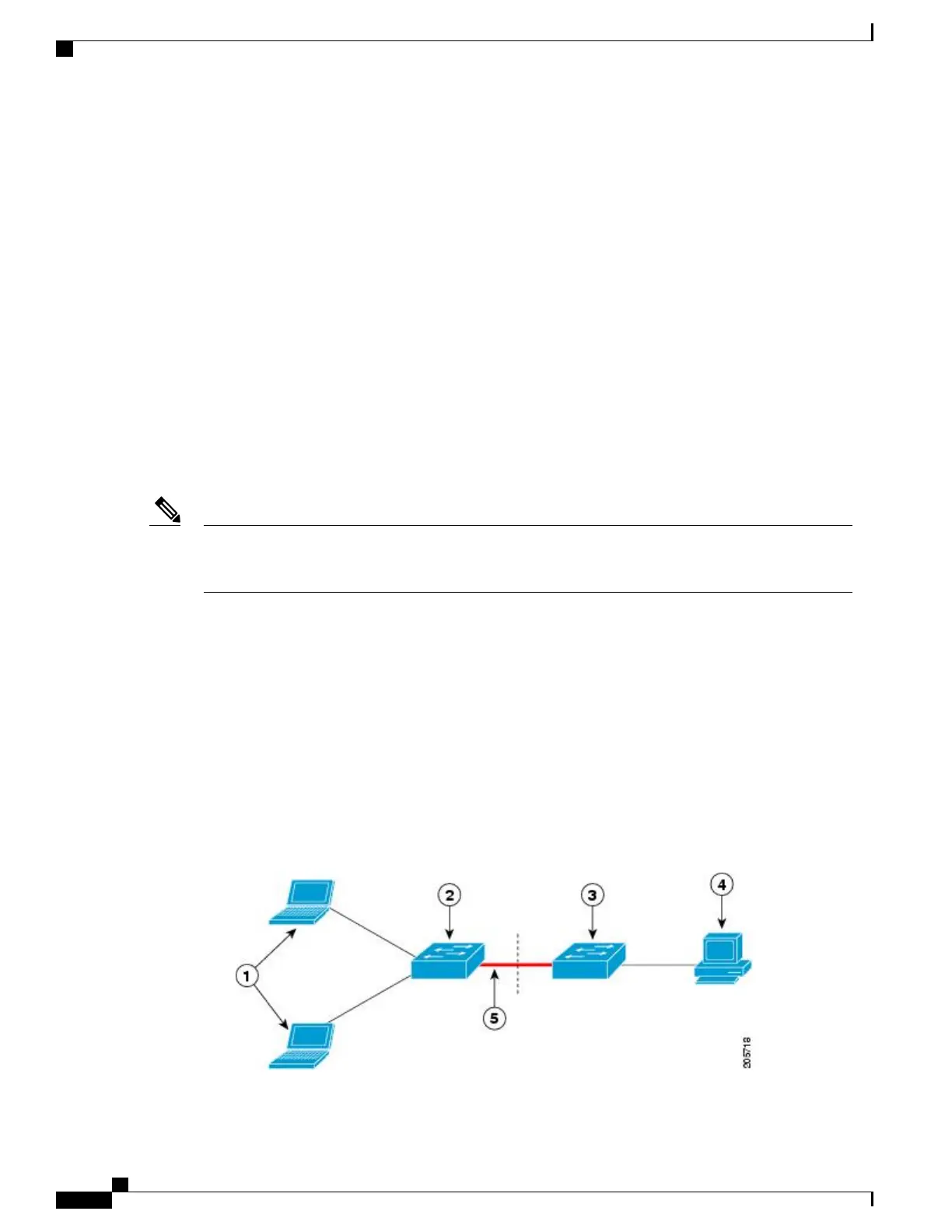is outside a wiring closet and is connected to an upstream switch through a trunk port. A switch configured
with the 802.1x switch supplicant feature authenticates with the upstream switch for secure connectivity.
Once the supplicant switch authenticates successfully the port mode changes from access to trunk.
•
If the access VLAN is configured on the authenticator switch, it becomes the native VLAN for the trunk
port after successful authentication.
In the default state, when you connect a supplicant switch to an authenticator switch that has BPDU guard
enabled, the authenticator port could be error-disabled if it receives a Spanning Tree Protocol (STP) bridge
protocol data unit (BPDU) packets before the supplicant switch has authenticated. Beginning with Cisco IOS
Release 15.0(1)SE, you can control traffic exiting the supplicant port during the authentication period. Entering
the dot1x supplicant controlled transient global configuration command temporarily blocks the supplicant
port during authentication to ensure that the authenticator port does not shut down before authentication
completes. If authentication fails, the supplicant port opens. Entering the no dot1x supplicant controlled
transient global configuration command opens the supplicant port during the authentication period. This is
the default behavior.
We strongly recommend using the dot1x supplicant controlled transientcommand on a supplicant switch
when BPDU guard is enabled on the authenticator switch port with the spanning-tree bpduguard enable
interface configuration command.
If you globally enable BPDU guard on the authenticator switch by using the spanning-tree portfast
bpduguard default global configuration command, entering the dot1x supplicant controlled transient
command does not prevent the BPDU violation.
Note
You can enable MDA or multiauth mode on the authenticator switch interface that connects to one more
supplicant switches. Multihost mode is not supported on the authenticator switch interface.
Use the dot1x supplicant force-multicast global configuration command on the supplicant switch for Network
Edge Access Topology (NEAT) to work in all host modes.
•
Host Authorization: Ensures that only traffic from authorized hosts (connecting to the switch with
supplicant) is allowed on the network. The switches use Client Information Signalling Protocol (CISP)
to send the MAC addresses connecting to the supplicant switch to the authenticator switch.
•
Auto enablement: Automatically enables trunk configuration on the authenticator switch, allowing user
traffic from multiple VLANs coming from supplicant switches. Configure the cisco-av-pair as
device-traffic-class=switch at the ACS. (You can configure this under the group or the user settings.)
Figure 95: Authenticator and Supplicant Switch using CISP
Consolidated Platform Configuration Guide, Cisco IOS Release 15.2(4)E (Catalyst 2960-X Switches)
1350
Information About 802.1x Port-Based Authentication

